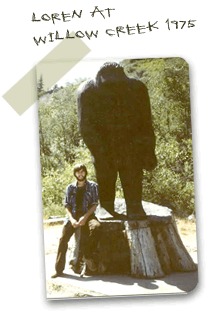
January 12, 2011
I’ve known John Green since the early 1960s, when he encouraged Mark A. Hall and me to research old Native tales of Sasquatch, resulting in our early article published within Le livre de l’inexplicable by Jacques Bergier (Paris: Editions Albine Michel, 1972), as “Some Bigfoot Traditions of the North American Tribes.”

John continues to be a good friend to me, and an outstanding straightforward spokesperson for clear thinking in Sasquatch studies.
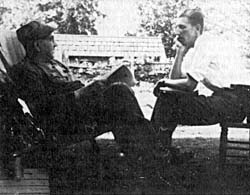
John Green and Albert Ostman.
In this special guest contribution, John Green addresses the “Sasquatch Classics”:
1) Jacko, a newspaper story from 1884.
I attempted without success to find living witnesses in the 1950s; independently investigated other printed sources, and found or learned of recollections from people with independent second-hand information. The opinion I expressed in my book was, “it will certainly never be possible to settle the status of the story beyond dispute.” I think, however, that the balance of the evidence from the time of the story, some of it discovered by me, favors a newspaper hoax.

Grover Krantz and John Green
2) Ape Canyon, from 1924.
There is no doubt that versions of this story were told at the time by more than one of the miners involved, and it was widely publicized, but by the time I investigated, more than 30 years later, Fred Beck was the only survivor available and there were problems with his story. From the material written at the time it seems probable that something exciting happened, but I don’t know what.
3} Albert Ostman, from 1924.
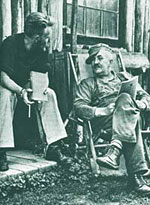
John Green and Albert Ostman.
I got to know Albert very well, from the mid 50’s until he died, and liked him and would tend to trust him, but there are certainly problems with the geography of his story as well as with its sensational elements regarding kidnapping, snuff, and so on. Two experts in ape anatomy whom I took to interview him agreed that if he had not had the experience he told of he must have learned a lot about apes in some other way. There is also the fact that his descriptions did not match the accepted picture of the “Sasquatch” at that time, but do match what many other people have described since and what the Patterson movie showed. Again, I don’t know what, if anything, actually happened.
4) Bigfoot at Bluff Creek, California, 1958.
There is convincing track evidence.
5) The Patterson movie, 1967.
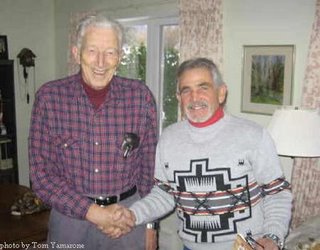
John Green and Bob Gimlin.
The film and track evidence backing up the story told by Bob Gimlin and Roger Patterson is rock solid.
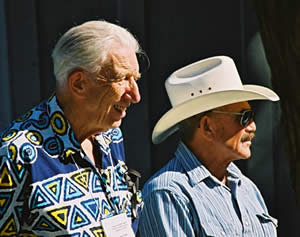
John Green and Bob Gimln.
Of the five “classics” the only one that influenced my firm conclusion that there has to be a huge biped walking around in North America is Bigfoot. At Bluff Creek in 1958 I saw 15-inch footprints that could not have been created by any human means that I or anyone else (then or in the half century since) was able to devise. I also saw 16″ prints that matched almost exactly a tracing I had of a footprint cast from an incident in British Columbia which had been the cause of my initial interest in the Sasquatch as a possibly real creature. Of course the movie would have also have been convincing, but by 1967 I had already been convinced for a decade.

John Green.
Prime examples of early stories that I found completely convincing are:
The Ruby Creek sighting report, 1941, for which I was able to talk to four independent witnesses who had gone to the site immediately afterwards and examined a trail of 16″ footprints, and which had been investigated by an American deputy sheriff who cast one of the footprints.
William Roe’s 1955 report of a close sighting of a female Sasquatch, from which he was able to have a detailed drawing done that was completely contrary to the accepted idea a Sasquatch current at that time (a giant Indian with long head hair), but matches the hair-covered, heavily built biped that thousands of observers have described since and that the Patterson movie shows.
Glen Thomas’ 1967 account of seeing a Sasquatch digging out hibernating ground squirrels from deep down among jagged rocks–because he was able to show us the hole he described, not at all not like one a bear would or could make and plainly far beyond anything a human could do without machinery, and because other investigators were later able independently to find similar holes over a wide area.
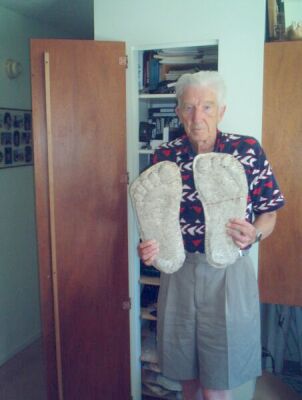
John Green.
Dealing with the subject more generally, I have no reason to assume that there could not be more than one type of hairy biped* in North America that has remained unknown to science, or that there could not be among them creatures far more like humans than those described in the overwhelming majority of North American reports. Also I have no opinions about what might exist in other parts of the world where I have done no investigating.
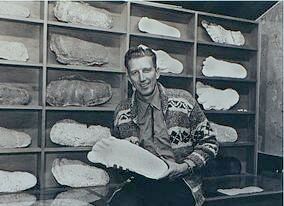
John Green.
As to people claiming detailed and prolonged observation or even interaction with scientifically unrecognized creatures, my attitude has always been that if they are telling the truth they need no help from me, but that until they choose to produce some sort of evidence it is unwise to rely on their claims. In the course of more than half a century I have heard from, or more usually just heard of, far more such people than I can remember. I sincerely hope that there are genuine witnesses among them and that some day one of them will provide conclusive proof, but unfortunately I have yet to learn of any of them producing any supporting evidence that is clearly better than “could be.”

John Green.
The thing that I have learned of, and experienced, is people who were just making up tall tales but went to lengths I would never have imagined to manufacture what appeared to be evidence to support them. I have also seen investigators I respected taken in by such people to the point where the revelation of how badly they had been duped caused them to abandon the subject altogether and drop out of sight. It is for that reason that I have issued warnings, which I suppose will always fall on deaf ears.
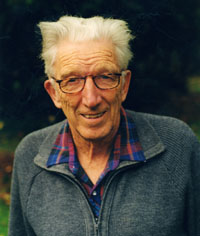
John Green.
For my part, I choose not to believe extreme claims that are backed by no evidence at all and that defy both scientific reasoning and common sense, especially when made by someone who is on record in their own written words telling wild yarns that are proven fiction.
John Green, 11 Jan 2011
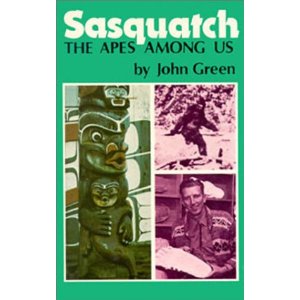
+++++++
* John Green has been clear in his open-mindness about non-Bigfoot hairy hominoids, some of which appear to be quite large.
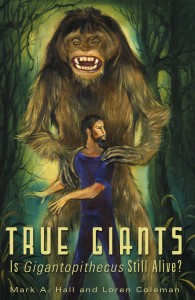
True Giants: Is Gigantopithecus Still Alive?
“By the late 1960s, some researchers began to realize that something bigger than Bigfoot was out there being seen and leaving enormous tracks nearly 2 feet long. One of these researchers, the Canadian John Green, had noticed from the accounts he had collected in North America that a whole group of ‘giants’ existed who were clearly bigger than the Sasquatch of the Pacific Northwest. Green was convinced that the evidence supported their existence, because he had talked to the witnesses who were very certain as to what they had seen. But it was researcher Mark A. Hall who first gave this group of creatures the name ‘True Giants.’ Hall had spent years examining the growing body of data pointing to this distinctive group of extremely large hairy hominids who routinely left long, four-toed footprints.”
~ Loren Coleman and Patrick Huyghe in The Field Guide to Bigfoot and Other Mystery Primates (NY: Anomalist Books, 2006).
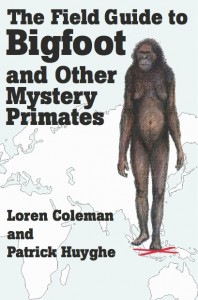
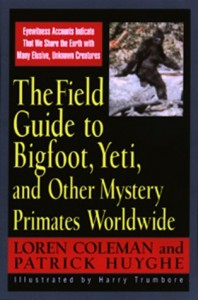
About Loren Coleman
Loren Coleman is one of the world’s leading cryptozoologists, some say “the” leading living cryptozoologist. Certainly, he is acknowledged as the current living American researcher and writer who has most popularized cryptozoology in the late 20th and early 21st centuries.
Starting his fieldwork and investigations in 1960, after traveling and trekking extensively in pursuit of cryptozoological mysteries, Coleman began writing to share his experiences in 1969. An honorary member of Ivan T. Sanderson’s Society for the Investigation of the Unexplained in the 1970s, Coleman has been bestowed with similar honorary memberships of the North Idaho College Cryptozoology Club in 1983, and in subsequent years, that of the British Columbia Scientific Cryptozoology Club, CryptoSafari International, and other international organizations. He was also a Life Member and Benefactor of the International Society of Cryptozoology (now-defunct).
Loren Coleman’s daily blog, as a member of the Cryptomundo Team, served as an ongoing avenue of communication for the ever-growing body of cryptozoo news from 2005 through 2013. He returned as an infrequent contributor beginning Halloween week of 2015.
Coleman is the founder in 2003, and current director of the International Cryptozoology Museum in Portland, Maine.
Filed under Bigfoot, Cryptomundo Exclusive, CryptoZoo News, Evidence, Eyewitness Accounts, Footprint Evidence, Guest Blog, Men in Cryptozoology, Sasquatch, True Giant, Windigo, Yeren, Yeti, Yowie